Circular 684
Marcy Ward
College of Agricultural, Consumer, and Environmental Sciences, New Mexico State University
Author: Extension Livestock Specialist, Department of Extension Animal Sciences and Natural Resources, New Mexico State University (Print Friendly PDF)
Sheep are versatile animals that can be used in many capacities. They can be the primary source of farm income, help diversify an agricultural operation, or simply provide additional income for those who only have a few acres. There are over 200 breeds of sheep worldwide, but only a certain few are acclimated to thrive in arid climates. Therefore, breed selection should be a critical part of planning and managing a sheep flock in the arid Southwest. The other aspect to consider when selecting a breed is production goals. Sheep can serve to produce exclusively wool or meat, or a combination of the two. The purpose of this publication is to provide information on breeds of sheep that can be used successfully in the Southwest.
Choice of Breed
The most appropriate sheep breed depends upon environmental conditions, the producer’s desired management intensity, and personal preference.
For accelerated sheep production, it might be necessary to use three or more breeds to develop a ewe flock that exhibits high levels of desirable traits. Accelerated flocks must be able to lamb out of season, produce large lamb crops, reach sexual maturity at an early age, and grow rapidly. Accelerated sheep production typically encompasses two breeding and lambing seasons within one year. This type of breeding program requires intensive management strategies and planning.
Another option for maximizing lamb and wool production is through simple crossbreeding. Whenever two breeds are crossed, the benefit is hybrid vigor. That is, the best traits of each breed are generally expressed in their offspring, resulting in hardier, rapidly growing, and productive lambs.
If producers want to overwinter ewes for spring lamb production, then regional breeds such as range-raised, fine wool ewes are an excellent choice.
Breeds of sheep are generally classified according to their best assets. Table 1 provides examples of common sheep breeds that are classified based on purpose and are considered adaptable to arid climates.
|
Table 1. Summary of Sheep Breed Classification and Purpose |
||
|
WOOL |
MEAT |
DUAL-PURPOSE |
|
Fine Wool |
Haired |
Columbia |
|
Merino |
Dorper |
Corriedale |
|
Rambouillet |
Katahdin |
Targhee |
|
Heritage |
St. Croix |
Polypay |
|
Navajo-Churro |
Royal White |
South African Meat Merino |
|
Debouillet |
Wooled |
|
|
Dorset |
||
|
Hampshire |
||
|
Suffolk |
||
Wool Breeds
Fine wool
The fine wool breeds are very common in the Western United States. These breeds can withstand heat, cold, and drought, and produce satisfactorily under harsh conditions. Fine wool breeds are more likely to breed out of season than are many other breeds. They produce a more desirable, finer-grading fleece that is more uniform than fleeces from other breed types. Specifically, the wool is less than 22 microns fiber diameter, and these sheep should annually produce 8 to 12 lb of raw wool and comparatively less lanolin than medium wool breeds.
Merino
The Merino breed (Figure 1) originated in Spain over 1,200 years ago. Since being brought to the United States, breeders from different regions have developed varieties of Merinos that best suited their respective environments. Specifically, the Delaine Merino is the breed primarily used in more arid climates since they can thrive under harsh conditions and with little feed. They are moderate- to small-sized and have few health or lambing problems. This breed also provides producers an excellent opportunity for crossbreeding if you are looking to improve wool quality. Since fleece characteristics are highly heritable, Merino crossbreeds will add staple length and clean fleece yield to crossbred offspring.
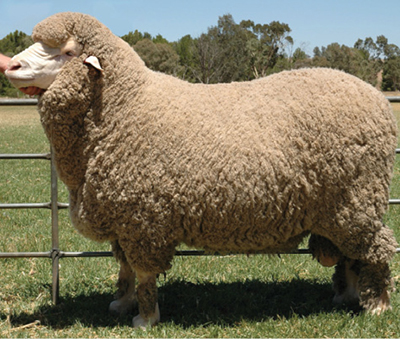
Figure 1. A Merino ram (photo by Cgoodwin, Wikimedia Commons).
Rambouillet
A derivative of the Merino breed, the Rambouillet (Figure 2) is one of the most commonly raised sheep in the Western United States. They have fewer skin folds, which reduces skin and external parasite problems. Rambouillets also have excellent wool quality. These sheep are very agile and have ideal flocking behavior, allowing for better management in rugged mountain terrain. They are gregarious (tend to flock), which can also help with managing predation issues. You will find Rambouillet genetics in many composite breeds in the industry today.
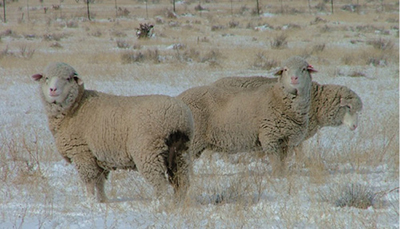
Figure 2. Rambouillet sheep on open range (NMSU photo).
Heritage
Navajo-Churro
Though quite rare today, the Navajo-Churro sheep (Figure 3) were the first domesticated sheep developed in the United States when the Spanish conquistadors introduced their Iberian breed to the Native Americans. The breed has been brought back from near extinction, and their wool is once again prominent in traditional Navajo rugs and wares. Other than wool color (white to tan to black), their most notable characteristic is their ability to grow multiple sets of horns (polycerate).
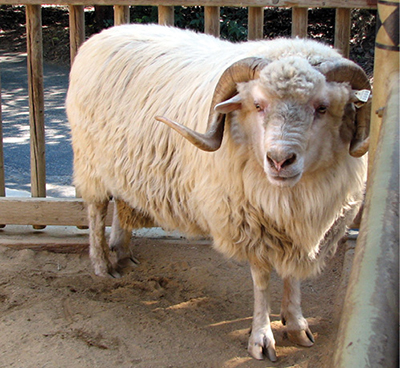
Figure 3. A Navajo-Churro ram (photo by Jean, flickr).
Debouillet
The Debouillet is a cross between a Merino and a Rambouillet. This is a moderate-framed, clean-white-faced breed with small, semi-erect ears and small wool cap. The Debouillet was developed by a New Mexico sheep producer in 1920. The breed provides the best combination of the Merino’s wool quality and the Rambouillet’s hardiness. This is one of the rarest breeds in the United States, but has proven best suited for New Mexico’s environment.
Meat Breeds
Haired
A “haired” variety of sheep simply means they produce little to no wool; instead they have a hair coat very similar to goats. These sheep can help improve carcass and growth in a flock, but will lack a second source of income from wool. It is important to keep in mind that meat breeds that have a high growth rate often require more feed inputs, which means body condition and overall production must be monitored more closely in sheep grazing arid rangelands. Some haired breeds will grow a winter coat, and can therefore be used in higher elevations or colder regions.
Dorper
The Dorper breed (Figure 4) is unique in that it has desirable growth and carcass traits while still being suitable for the Southwest. They also exhibit excellent reproductive performance and can be bred year-round. Management and labor are less with this breed since they do not need to be shorn and rarely have lambing trouble.

Figure 4. Dorper lambs (photo by Steve Byrns, Texas A&M AgriLife Communications).
Katahdin
The Katahdin breed (Figure 5) originated in the United States and is a cross of multiple breeds, including the West African haired sheep, St. Croix, Wiltshire Horn, and various English meat breeds, such as Suffolk and Hampshire. Katahdins are growing in popularity for their hardiness, meat production, growth, and fertility. This breed is also very tolerant to parasites, and therefore minimal parasite control is needed.
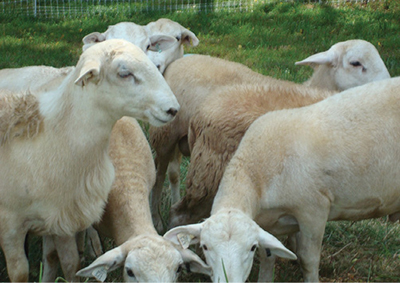
Figure 5. Katahdin sheep (photo by bean MOST, flickr).
St. Croix
As the name suggests, St. Croix sheep (Figure 6) are a composite breed that originated in the Virgin Islands. Though predominantly white, this breed can also be tan or black, or have spot patches. These highly adaptable sheep are excellent foragers. They can also develop a winter coat in colder climates. Highly fertile, the St. Croix could be used in an accelerated production program. Like the Katahdins, this breed is also resistant to parasite infestation.
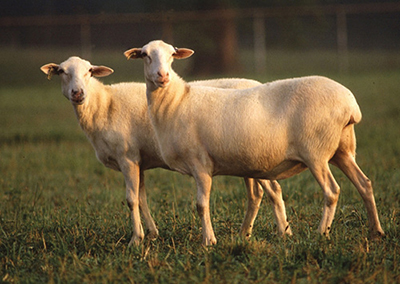
Figure 6. St. Croix sheep (photo by Perry Rech, USDA Agricultural Research Service, Bugwood.org).
Royal White
Developed in Texas, this haired sheep is a cross between St. Croix, Dorper, and White Dorper breeds. The Royal White (Figure 7) has proven to be very efficient, exhibiting lower maintenance requirements for production. Lambs have also shown to be more thrifty, with greater survivability rates than other breeds. This breed is classically all white and polled (lacking horns).
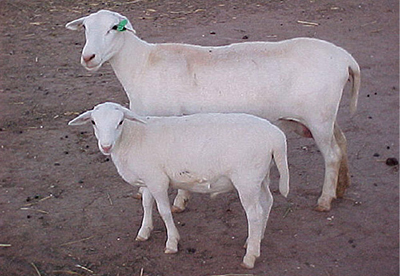
Figure 7. Royal White sheep (photo courtesy of Royal White Sheep Association).
Wooled
Wooled meat breeds can serve as dual-purpose; however, most of the breeds that fall into this category either carry black fibers or coarser wool, making them less desirable for wool marketing. The black-hided breeds can be more susceptible to heat stress; therefore, extra shelter may be needed. All sheep in this category, however, make for excellent small family flocks or youth projects.
Dorset
Dorset sheep (Figure 8) originated in England, but the Spanish Merino influenced the development of this breed. Dorsets come either horned or polled. Its desirable carcass traits and wool quality make this breed one of the most popular in the United States. It has a clean white face, but does develop cheek and cap wool. The Dorset serves as a good alternative for a small family flock, with the capability of out-of-season breeding.
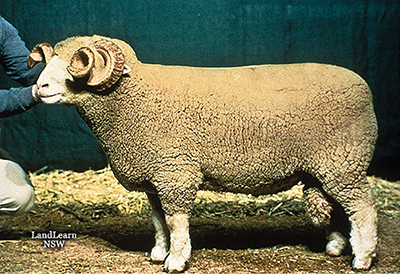
Figure 8. A Dorset ram (photo by NSW DPI, flickr).
Hampshire
The original Hampshire breed (Figure 9) was established in England and was a derivative of the smaller-framed Southdown breed. Since that time, the modern Hampshire has developed into a larger, heavier-muscled animal with desirable growth and carcass traits. Through breeding, the standard Hampshire now has a more open black face and black points with a wool cap. This breed is very popular with youth for 4-H or FFA projects.
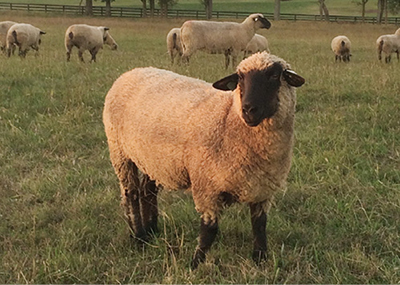
Figure 9. Hampshire sheep in pasture (photo courtesy of American Hampshire Sheep Association).
Suffolk
Like the Hampshire, the Suffolk (Figure 10) has the Southdown breed in its ancestry. The original Suffolk was a cross between the Southdown and the Norfolk Horned. Continued development of the breed has resulted in what we recognize today, with a characteristic clean black face and points. Their hardiness, growth, and carcass traits make them desirable for a small flock or youth project animal.
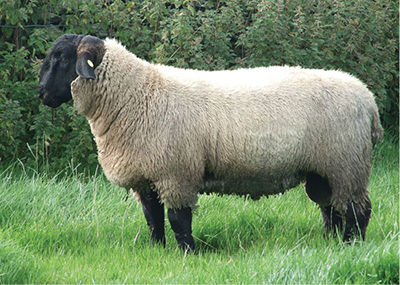
Figure 10. A Suffolk ram (photo by J gareth p, Wikimedia Commons).
Dual-Purpose
As the name suggests, a sheep that is classified as dual-purpose possesses traits that include both good wool production in yield and quality, while also producing rapidly growing lambs. They are typically prolific breeders that are highly adaptable to a wide range of climates.
Columbia
The Columbia (Figure 11) is considered the first “American breed.” A cross between a Rambouillet and a Lincoln, the Columbia breed was established by the United States Department of Agriculture (USDA) in 1912. The intent was to develop a breed that provided producers in the Western United States an animal that produced both a good lamb crop and wool yield under harsh range conditions. They are a larger-framed sheep with mature weights ranging from 225 to 300 lb.
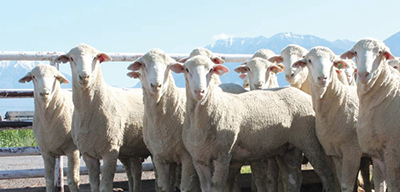
Figure 11. Columbia sheep (photo courtesy of Columbia Sheep Association).
Corriedale
Developed in New Zealand, the Corriedale (Figure 12) is a cross between a Lincoln and a Merino. The Lincoln provides the growth and carcass traits, while the Merino contributes to the Corriedale’s wool quality and substantial wool yield. They do require a steady feed supply for optimal performance, but could be suited well in a crossbreeding program in a more sparse range condition.
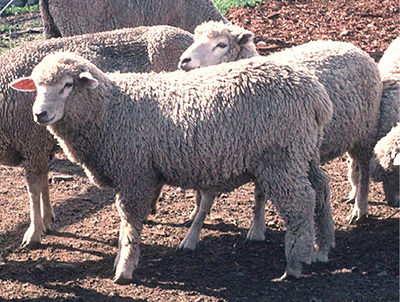
Figure 12. Corriedale sheep (photo by Bob Nichols, USDA–NRCS).
Targhee
The Targhee (Figure 13) is another breed developed by the USDA to help diversify the genetic base of the nation’s sheep population. The goal was to improve overall production in the U.S. This breed is a combination of Rambouillet, Corriedale, and Lincoln. The ewes are known for their ability to successfully raise twins under rugged conditions and breed out of season, which can result in more pounds of lamb weaned per ewe. This breed could work well in higher, cooler elevations.
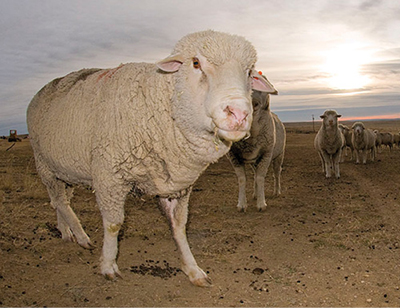
Figure 13. Targhee sheep on open range (photo by Yathin sk, Wikimedia Commons).
Polypay
Like the Columbia and Targhee breeds, the Polypay (Figure 14) breed was developed by the USDA in order to best meet the needs of U.S. sheep producers. The Polypay consists of four foundation breeds: Rambouillet, Targhee, Finnsheep, and Dorset. The Polypay provides the best traits from the respective breeds for wool, carcass, and reproduction, including breeding out of season. It suits many management situations, and as a result has grown in popularity among sheep producers.
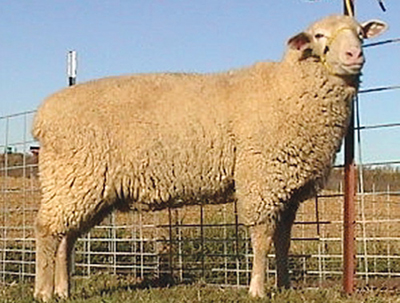
Figure 14. A Polypay ewe (photo courtesy of Brett Pharo, President, American Polypay Sheep Association).
South African Meat Merino (SAMM)
The South African Meat Merino (SAMM; Figure 15) has gained in popularity in the U.S. over the last 20 years and has been shown to acclimate to arid regions well. Lambs are early maturing, with a rapid growth rate. This breed will also yield strong, good-volume fleeces, making them an excellent dual-purpose choice for producers.
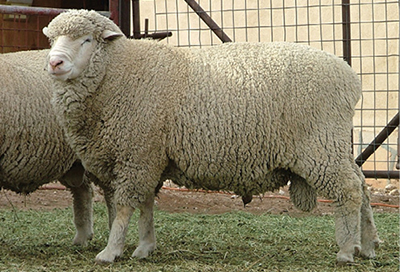
Figure 15. A South African Meat Merino (SAMM) ram (NMSU photo).
Breed Selection Criteria Guidelines
Ewes
- Adaptability to their environment and available resources
- Type of coat or wool (finer-wool breeds tend to work better in warmer, more arid climates)
- Level of reproduction (singles, twins, multiples)
- Timing and frequency of lambing (management ability needs to be considered)
- Level of care during lambing
Rams
- Purpose of the flock (meat/wool/dual) can be driven by the breed of the ram
- Genetic record (Is the ram safe to use on ewe lambs?)
- Breeding soundness (all rams should be tested for fertility before purchase or use)
- Mature size and growth rate (will influence the overall physical size of the flock, and thus nutrient demand)
Breeds That May Prove Challenging In An Arid Environment
When considering a breed, the history of where the breed was developed can be important. Many breeds are best suited for more temperate climates where feed is abundant. Other breeds that may have difficulty are those with high levels of production in either lambing rates or growth. Finnsheep, Barbados Blackbelly, and Romanov are examples of prolific breeders, bearing three or more lambs at a time. Breeds like Texel, East Friesian, and British Milk Sheep have very high production demands that cannot be successfully met by the sparse grazing conditions of rangelands in the Western United States.
Genetic Traits to Avoid
Most genetic defects are not realized until an animal is born with a specific and heritable problem. Common defects include wool blindness, inverted eyelids, jaw malformations, black or pigmented fibers in wool breeds, cryptorchidism, and rectal prolapse. Culling affected animals, proper selection of desirable traits, and good recordkeeping will reduce the incidence of genetic defects within a flock.
Skin folds and wool blindness
Quite simply, when facial wool patterns result in growth around the eyes, the sheep are literally blinded (Figure 16), posing great risk for their health and survival. Skin folds, commonly found in breeds such as the Merino, are highly heritable as well. These folds are prone to insect infestation and infection.
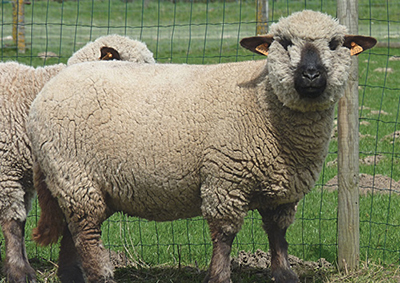
Figure 16. Example of wool blindness in a Hampshire Down sheep (photo by Jamain, Wikimedia Commons).
Inverted eyelids
This is a fairly common and heritable disorder in sheep. The eyelid turns in on itself (Figure 17), causing swelling and irritation. Though the condition is treatable by clipping and correcting the inversion with proper suturing, it must be recorded and noted that the animal be marked for culling. In operations where lambing is done in confinement, the problem is usually identified at birth.
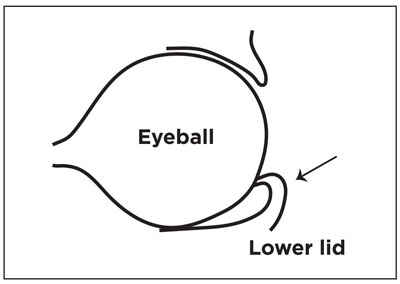
Figure 17. Sheep with the inverted eyelid trait have eyelids that turn in on themselves, which can cause swelling and irritation.
Jaw malformation
Jaw malformation is another common and highly heritable trait. In this case, the animal is born with either a protruding lower jaw or overreaching upper jaw (Figure 18). Depending on the severity, it can affect the animal’s ability to graze and eat normally. An overbite will sometimes self-correct; however, these animals should not be retained in the herd. If any malformations become prevalent, the dam and sire should be identified and culled as well.
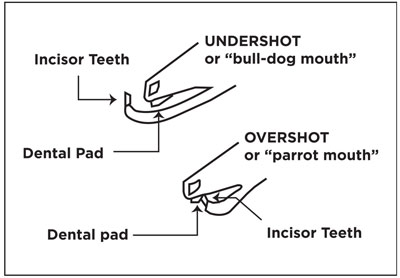
Figure 18. Sheep with jaw malformations have either a protruding lower jaw (undershot or “bulldog mouth”) or overreaching upper jaw (overshot or “parrot jaw”).
Black or pigmented fibers
Black or pigmented fibers will have a negative impact on wool quality and price of a fleece. Therefore, it is economically important to monitor for signs of pigmentation in rams, ewes, and their offspring. The heritability of pigmentation is approximately 30% (Sanchez et al., 2014). There is less of a correlation between “black” lambs and black fibers, but those lambs should still be closely evaluated at weaning. If pigmentation or spots still exist, those animals should be culled from the herd where wool production is important.
Cryptorchidism
In ram lambs, this defect may not be realized until weaning. One (or in rare cases both) testicle fails to descend into the scrotum from the body cavity. This will affect the fertility of the ram, and he should therefore be culled from the flock once diagnosed.
Rectal prolapse
This disorder—more common in meat breeds—is typically not realized until after weaning, when lambs are put on higher-grain diets. The rectal tissue is weaker than normal, causing it to protrude outside the body. Though easily fixed with a minor surgery, this is a relatively heritable disorder that should be evaluated.
If any of these or other genetic irregularities show themselves, immediately mark that animal to be culled from the herd. Then the dam and sire must be evaluated. Through good recordkeeping, it may be possible to trace back to the animal that is the potential carrier of the genetic flaw. If identified, that animal must be culled as well.
Summary
When selecting breeds to use for an operation, production goals and resources should be at the forefront of the decision process. Ranging sheep need to be hearty and efficient, and require minimal care. Rambouillets, Merinos, Columbians, Debouillets, Polypays, and Dorpers may be good choices for grazing sheep in open range. Dorsets, Hampshires, and Suffolks have proven exceptional for small family flocks. Regardless of the breed, proper selection of desirable traits and removal of defects through stringent culling will result in a healthy and profitable flock.
References
Mathis, C., and T. Ross. 2005. Sheep production and management [Circular 604]. Las Cruces: New Mexico State University Cooperative Extension Service.
Navajo-Churro Sheep Association. 2016. NCSA home page [Online]. Retrieved November 7, 2016, from https://www.navajo-churrosheep.com/
Oklahoma State University Department of Animal Science. 2016. Sheep breeds [Online]. Retrieved August 16, 2016, from https://ansi.okstate.edu/breeds/sheep
Sanchez, A.L., J.I. Urioste, F. Penagericano, K. Meimaur, I. Sienra, and R. Kremer. 2014. Genetic parameters of objectionable fibres, skin spots and halo-hair in Corriedale sheep. Proceedings, 10th World Congress on Genetics Applied to Livestock Production, Vancouver, B.C., Canada, August 17–22, 2014.
Texas Sheep & Goat Raisers Association. 2016. Sheep breeds of Texas [Online]. Retrieved August 16, 2016, from https://www.tsgra.com/livestock.php
U.S. Targhee Breed Association. 2016. Targhee standards [Online]. Retrieved August 16, 2016, from http://www.ustargheesheep.org/standards.html
For further reading
Circular 374: New Mexico Range Plants
https://pubs.nmsu.edu/_circulars/cr-374/
Circular 678: Poisonous Plants of New Mexico Rangelands
https://pubs.nmsu.edu/_circulars/CR678/
All Livestock Publications
https://pubs.nmsu.edu/_b/

Marcy Ward Marcy Ward is the Extension Livestock Specialist at NMSU. She received her B.S. and M.S. in animal science from Colorado State University and NMSU, respectively, and her Ph.D. in ruminant nutrition from North Dakota State University. She was most recently the Beef Program Director at Colby Community College in Colby, KS.
To find more resources for your business, home, or family, visit the College of Agricultural, Consumer and Environmental Sciences on the World Wide Web at pubs.nmsu.edu
Contents of publications may be freely reproduced for educational purposes. All other rights reserved. For permission to use publications for other purposes, contact pubs@nmsu.edu or the authors listed on the publication.
Brand names appearing in publications are for product identification purposes only. No endorsement is intended, nor is criticism implied of similar products not mentioned. Persons using such products assume responsibility for their use in accordance with current label directions of the manufacturer.
New Mexico State University is an equal opportunity/affirmative action employer and educator. NMSU and the U.S. Department of Agriculture cooperating.
March 2017


